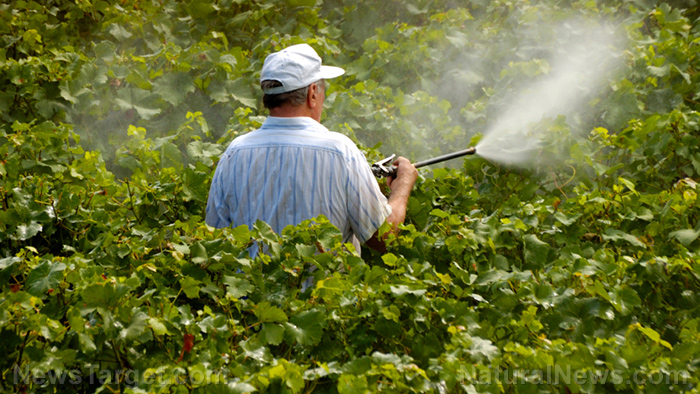Prochloraz — toxicity, side effects, diseases and environmental impacts
11/15/2017 / By Earl Garcia

Prochloraz is a widely used fungicide that belongs to the same chemical make up as phenol ethers. The chemical was introduced in 1977 and is primarily used across the globe — including Europe, Australia, Asia and South America — in the gardening and agriculture sectors. According to a Pub Chem entry, the fungicide can either be used alone or in combination with other chemicals to address fungal infestation of cereals.
The article also notes that the hazardous compound is commonly used in seed dressings to prevent the onset of fungal diseases in staple crops such as rice, coffee and vegetables as well as citrus fruits, sugar beets and rapeseed oil. The harmful fungicide is also applied to wheat, barley and winter rye as well as avocado, mushrooms and mangoes.

List of known side effects
Exposure to the hazardous fungicide by inhalation, ingestion, or direct skin and eye contact may result in a plethora of medical emergencies. Inhaling toxic fumes produced by the fungicide may cause severe respiratory irritation, sore throat, and nasal inflammation. Likewise, inhaling the hazardous substance may further exacerbate the condition of people with pre-existing respiratory disorders such as chronic bronchitis and impaired respiratory function.
The chemical is found to negatively affect the female reproductive health too. Exposure to the harmful compound may lead to mood swings, depression, weight gain, and hot flushes as well as vaginal dryness, bloating, and early menopause. Long-term prochloraz exposure is also shown to cause circulatory disorders such as increased blood clots, low blood pressure, blood vessel dilation, and white blood cell death.
The hazardous chemical is also known to trigger the onset of bone weakness, mineral imbalance, and cardiovascular damage as well as liver injury, convulsions, and gastrointestinal disturbance. The fungicide is found to seep into open wounds and abrasions as well, which in turn may lead to severe skin irritation and more serious conditions such as severe peripheral neuropathy, limb paralysis, and loss of sensation. Furthermore, direct eye contact may result in severe eye irritation and corneal injury.
Body systems affected by prochloraz
Prochloraz is particularly detrimental to the respiratory system. Likewise, the harmful fungicide targets the heart and overall blood circulation, the bones and the nerves. It is also highly toxic to the muscular system, the digestive tract and the body’s overall immunity. Prochloraz negatively affects the eyes, skin and the female reproductive health as well.
Items that can contain prochloraz
Prochloraz is a key ingredient in many commercially produced fungicides.
How to avoid prochloraz
A safety data sheet published by Santa Cruz Biotechnology recommends using personal protective equipment — such as glasses, chemical goggles, gloves, and respirators –in order to avoid inhalation and direct skin and eye contact. Likewise, the safety guidelines recommend that people exposed to the chemical thoroughly wash their skin and eyes to prevent adverse health events. The entry also suggest that people who either inhaled or ingested the toxic fungicide be given immediate medical assistance.
Where to learn more
- Japan just banned 19 ingredients found in antibacterial soap
- Exposure to common fungicide causes neurological problems across four generations
- Fungicide chemicals found to produce autism-like symptoms in animal studies, causing inflammation of the nervous system
- Overused fungicides give rise to deadly, resistant fungus threatening humans and crops
- Chemically induced autism? Scientist discovers pesticides, fungicides lead to neurodegeneration in test subjects
Summary
Prochloraz causes severe respiratory irritation, early menopause and depression.
Prochloraz exposure results in vaginal dryness, bone weakness and white blood cell death.
Prochloraz triggers blood disorders, cardiovascular damage and liver injury.
Prochloraz raises the odds of severe peripheral neuropathy, mineral imbalance and digestive issues.
Prochloraz is particularly detrimental to both the respiratory tract and the female reproductive health.
Prochloraz negatively impacts the bones, the nerves, the heart and overall blood circulation.
Prochloraz effects muscle health, the digestive tract and the immune system as well as the eyes and the skin.
Sources include:
Tagged Under: Prochloraz



















